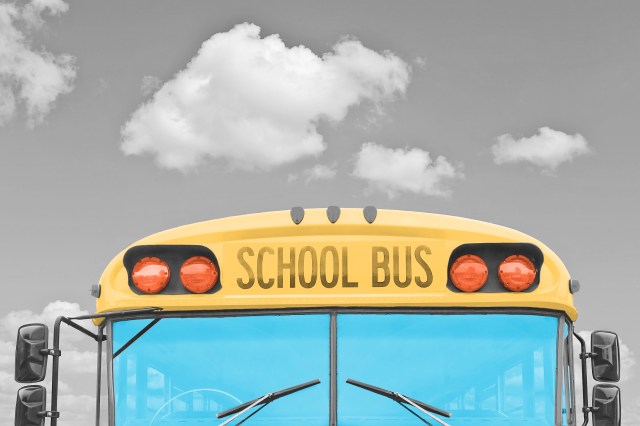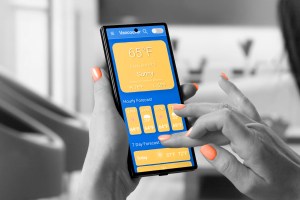
School Buses
Glimpse a fleet of buses parked at any U.S. public school, and you’ll notice they’re all the same deep yellow — and it’s been that way for nearly a century. In an effort to standardize school bus construction around the country, thus ideally making them both safer and cheaper to mass-produce, school transportation officials met at Columbia University in 1939 to discuss the universal color for these vehicles. Fifty shades were hung up on the walls, ranging from lemon to deep orange. The color that was finally selected — known today as National School Bus Glossy Yellow, or Color 13432 — was chosen because of its ability to stand out from the background. Education officials didn’t know it at the time, but Color 13432 is wired to capture our attention, as the shade stimulates two of the three types of cones in the human eye — sending double the transmission to the brain compared to many other colors. That’s one reason a big yellow school bus is just so hard to miss.

Green Screens
In the age of computer-generated imagery, the green screen is nearly as ubiquitous as the film camera. The technique using green screens, called chroma keying, has been around since the early days of film, but why is the screen green, exactly? Turns out, this verdant hue has more to do with human skin tones than the color itself. Most human skin is essentially some shade of orange, and because green (and in some cases blue) is far away from this hue, the color can be used by a “chroma keyer” to replace the background image without affecting the human in the middle. This also explains why meteorologists can’t wear green on St. Patrick’s Day, since they would “disappear” on newscasts; the chroma keyer would include their green-hued clothes along with the green screen.

Traffic Lights
Traffic lights today help motorists navigate busy intersections, but this helpful technology is actually a direct descendant of railroad traffic lights. Before the dawn of the automobile, railroads used the color red to mean “stop” because red has the longest wavelength in the visible spectrum — meaning it could be seen farther than any other color. This was (and is) especially important on the rails, because trains can take at least a mile to come to a stop. Initially, green meant “caution” and white meant “all clear,” but when some conductors confused starlight as an all-clear signal, green eventually replaced white.
In the very early years of the automobile era, traffic lights were only two colors — green and red. The first yellow light wasn’t introduced until 1920, and the three-way traffic light we know today wasn’t patented until 1923. Yellow became known as “caution” due to the fact that it’s the second-easiest color to spot, after red. Originally, yellow was also used for stop signs as it was easier to see the color at night, but the invention of reflective materials and non-fading dyes soon saw the spread of red stop signs throughout the country.
More Interesting Reads

Surgical Scrubs
Walk into any hospital (or watch any medical drama), and surgeons are almost always wearing bluish-green scrubs. Because blue and green are far removed on the color spectrum compared to red, these cooler colors help refresh a surgeon’s eyes when operating on a patient (whose insides are essentially various shades of red). Because surgeons are visually focused on red-hued environments, glancing at a white background (the chosen hospital color of times past) can leave a ghostly green after-image, much like what your eyes experience after a camera flash. However, if the surrounding environment is green, then those after-images simply blend into the background.

Airplanes
Although today’s Boeing 737s and Airbus A320s can feature colorful airline logos, the majority of the plane is painted white — and that’s for a good reason. Because the color white contains all colors in the visual spectrum, it’s also the most reflective, which helps keep airliners cool, especially when taxiing on runways. Airplanes are usually cooled by air sucked into engines during flight, or by external units hooked up to planes at the gate. However, if a plane experiences a long delay on the tarmac and engines are idle, things can get toasty really quick. So airlines will use any trick in the book, including lowering sun shades, opening air vents, and yes, painting planes white, to help keep passengers in the cabin as comfortable as possible.











